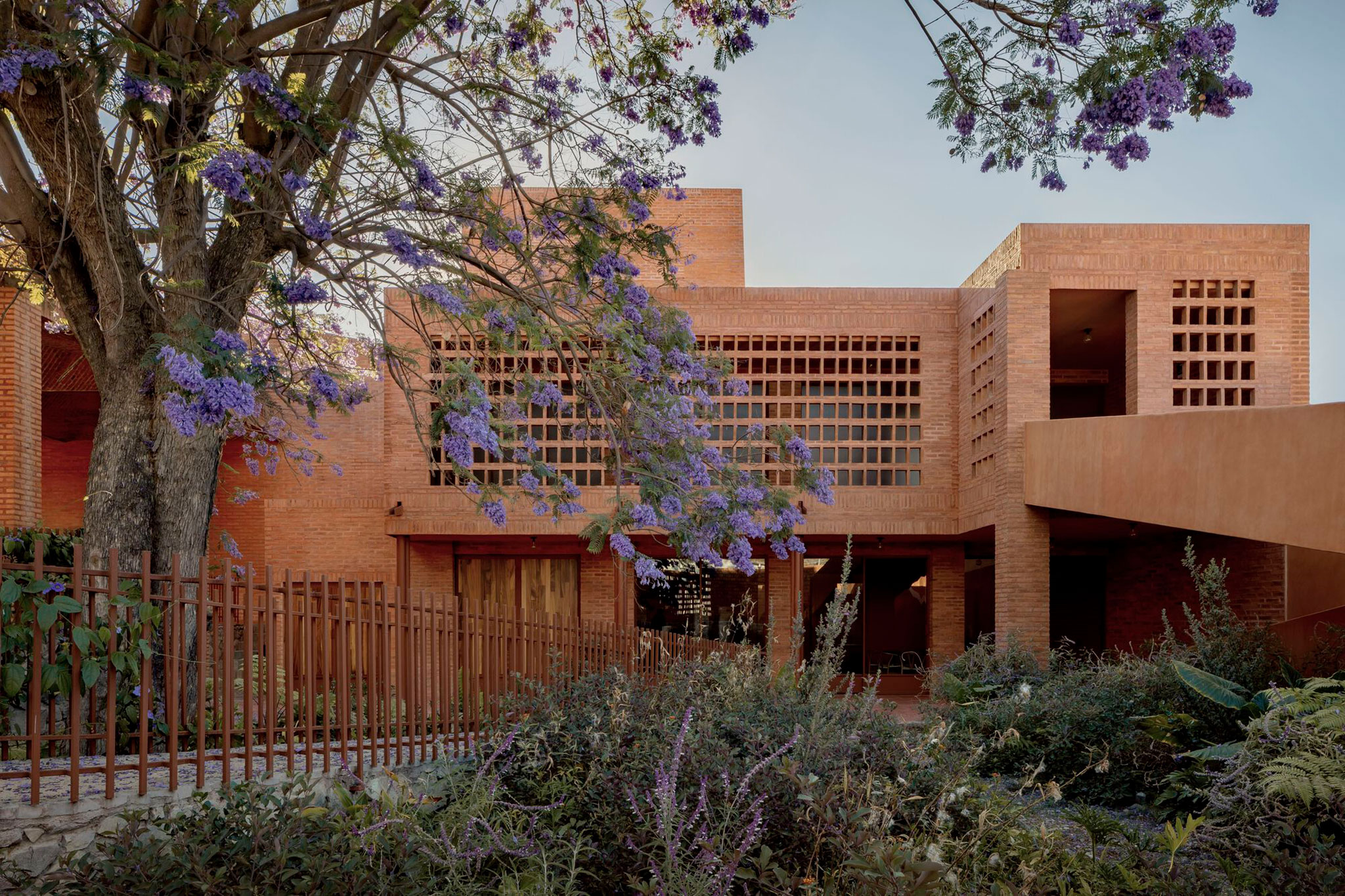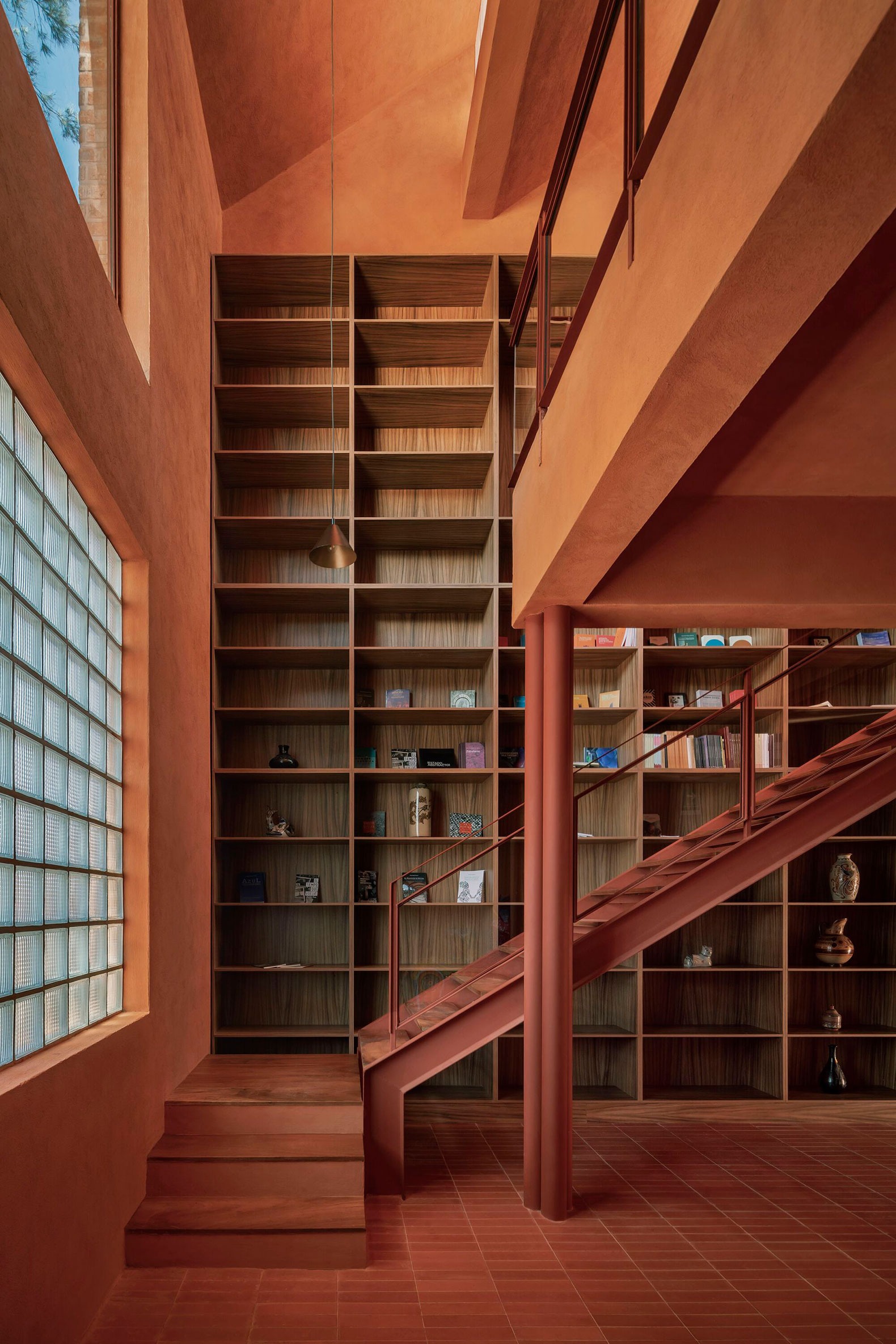
The project developed by ATELIER ARS integrates three new landmarks into the existing elements of the complex: a library that functions as the complex's façade, a service building and a central pond. These elements function as boundaries, thus acting as a single enclosure.
The new buildings of the complex were built with traditional clay elements as a tribute to the auditorium's brick-vaulted portico, the most valuable existing architectural element. To this end, different formats and construction systems were used, seeking to create a certain continuity with what already exists and contributing to preserving the region's living artisanal knowledge.

Centre for Culture and Arts of the Ribera by ATELIER ARS. Photograph by César Béjar.
Project description by ATELIER ARS
The project to intervene in the existing auditorium and expand it as a cultural center was requested by the Ministry of Culture of the State of Jalisco, to meet the objectives of the program known as Cultura Cardinal. This program seeks to decentralize culture and spread it in different regions of the state, through the construction of different cultural complexes. Our project is located on the shore of Lake Chapala, the largest lake in Mexico.
Its coastline is the most important settlement of foreigners in the country, due to the benefits of its climate and peaceful lifestyle. It was very important for us that our project could communicate part of the cultural history of the site.

That is why we took on the task of researching and learning about some of the founding myths of the ancient Wixárika culture, which has one of its most important ceremonial centers in Lake Chapala.
Natural formation and myth. In the Paleozoic era, the lake was part of a fjord coming from the Pacific Ocean. Due to volcanic activity, the topographic system known as the Mexican Transversal Neovolcanic Axis emerged.
This phenomenon separated the great inland sea to which Lake Chapala belonged, leaving it delimited by topographical eminences. Over the centuries, these natural phenomena produced the ecosystem that we know today, with a very particular identity in terms of the mineral configuration of the subsoil, vegetation, fauna, climate, etc. where the presence of the lake is a fundamental factor for the understanding of the founding cultures of the place.

The myths of this pre-Hispanic culture allude to these processes of topographic and aquifer formation of the site. Their legends tell us about the emergence of the lake through a process of drying, in which a goddess sank her staff into the seabed, causing the water to descend and also producing the formation of an islet, in the same place where the most important sanctuary of the Wixárika culture is located today. Our intervention tries to narrate some of these myths in a simple and understandable way for anyone, which we approach in three different moments as part of a landscape narrative.
Reconsidering the preexistence. For the configuration of the new cultural center, the starting point of our intervention was the recovery of what preexisted on the site: an auditorium for 400 people and an office building. The auditorium already contained a portico with traditional brick vaults that we recognized as the most valuable preexisting element in architectural terms.
That is why we decided that the rest of the buildings would be built with clay elements from the region, using different formats and construction systems, to produce a sense of unity, and in turn, as a way to help perpetuate the artisanal knowledge that is still found in the region.

Although none of these pre-existing buildings had heritage value, we decided to recover them and integrate them into the new complex, to which we added three new elements: a library as the complex's façade, a longitudinal service building with a music room, dance hall and open-air amphitheatre, and finally a central reflecting pool.
The location of the new buildings was done so that they could function as boundaries, and so that their presence would convey the idea of enclosure. For this reason, the library building is clearly aligned with the avenue and the long service building, for its part, delimits the eastern side of the site.
















































